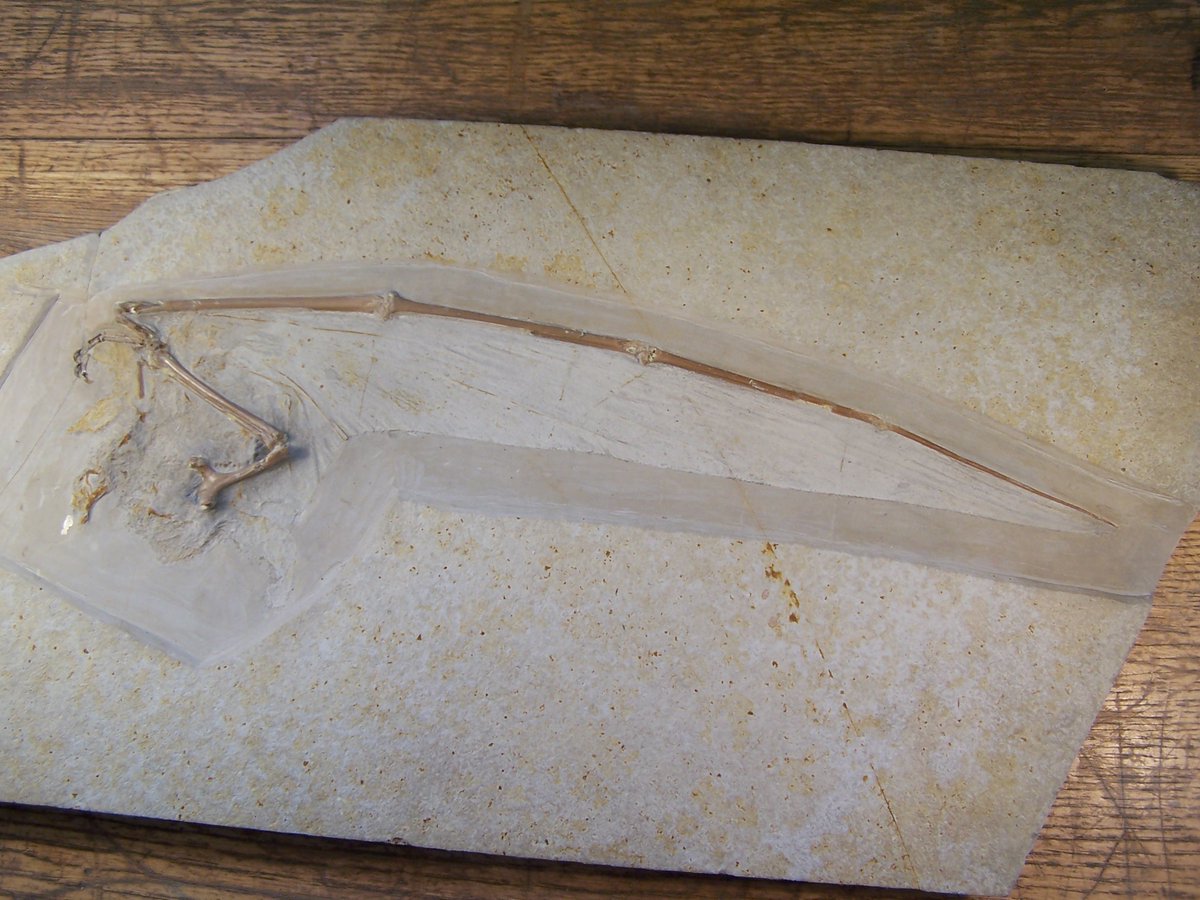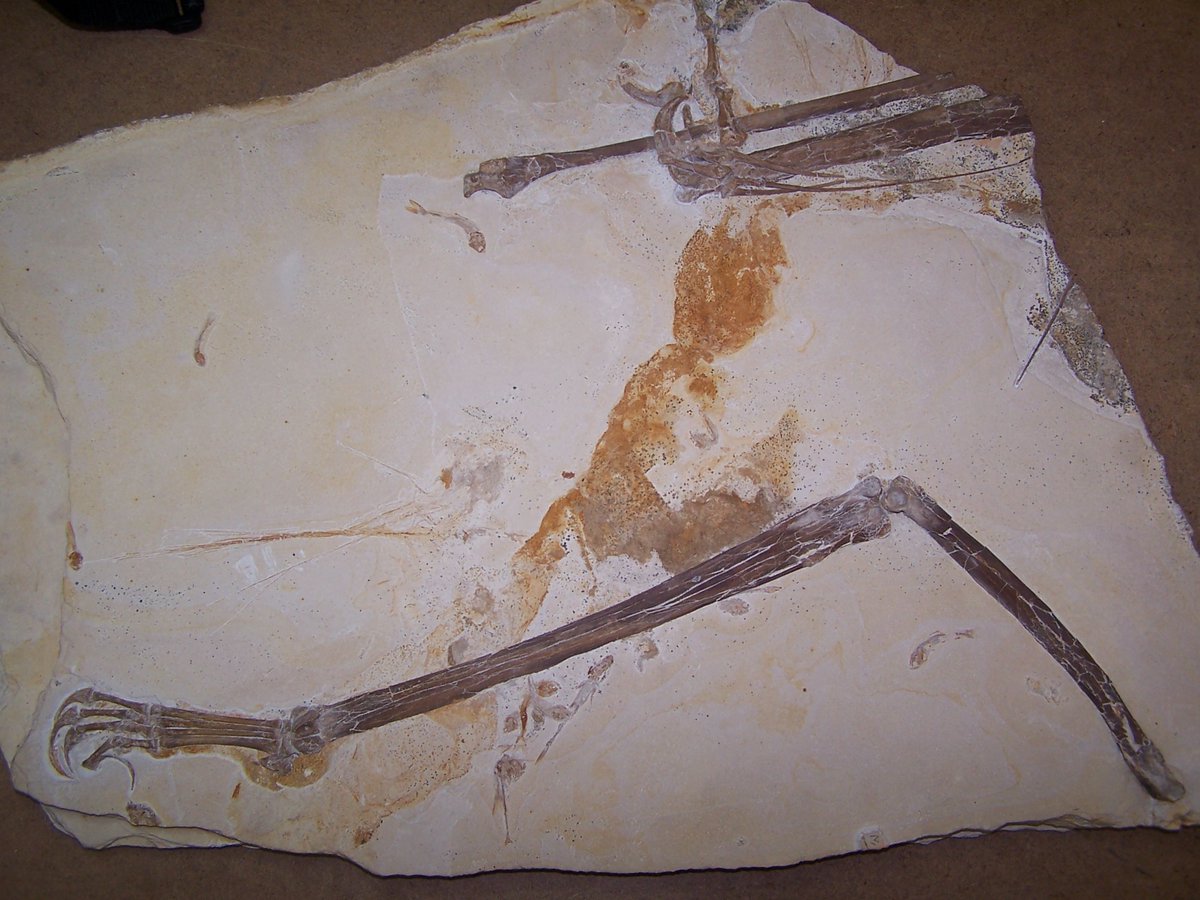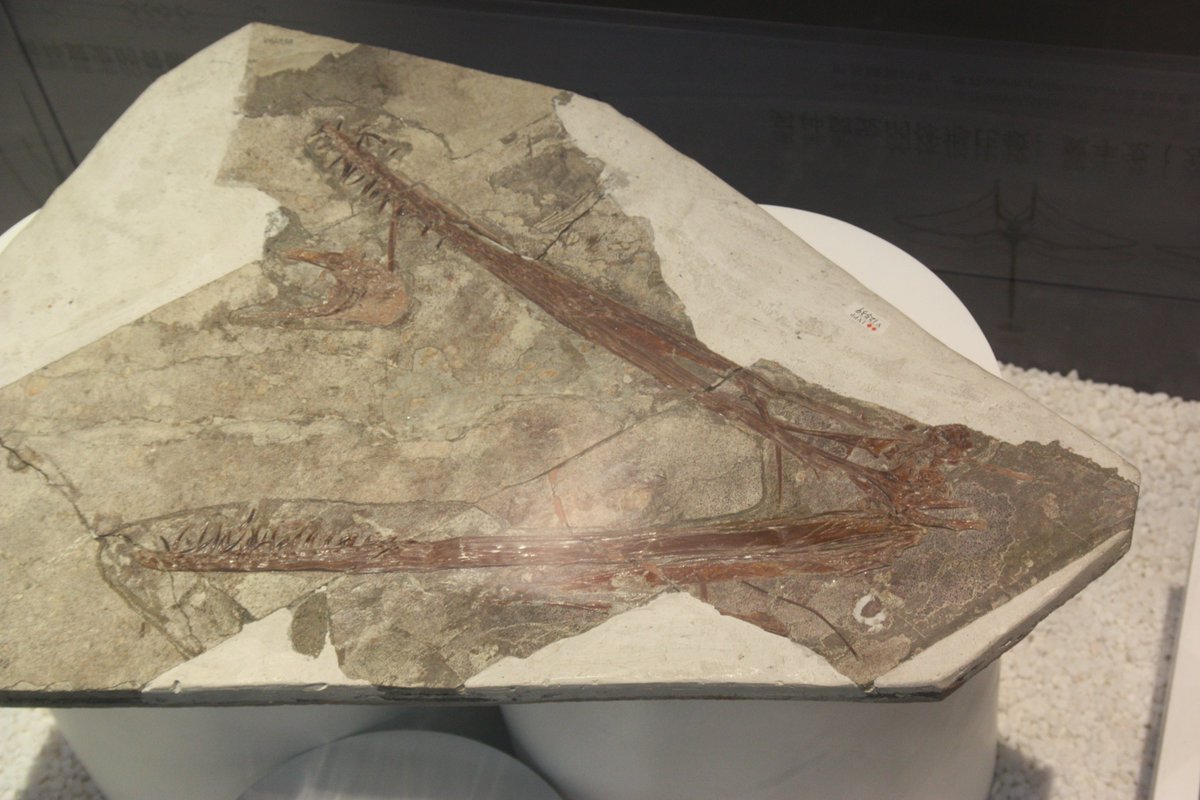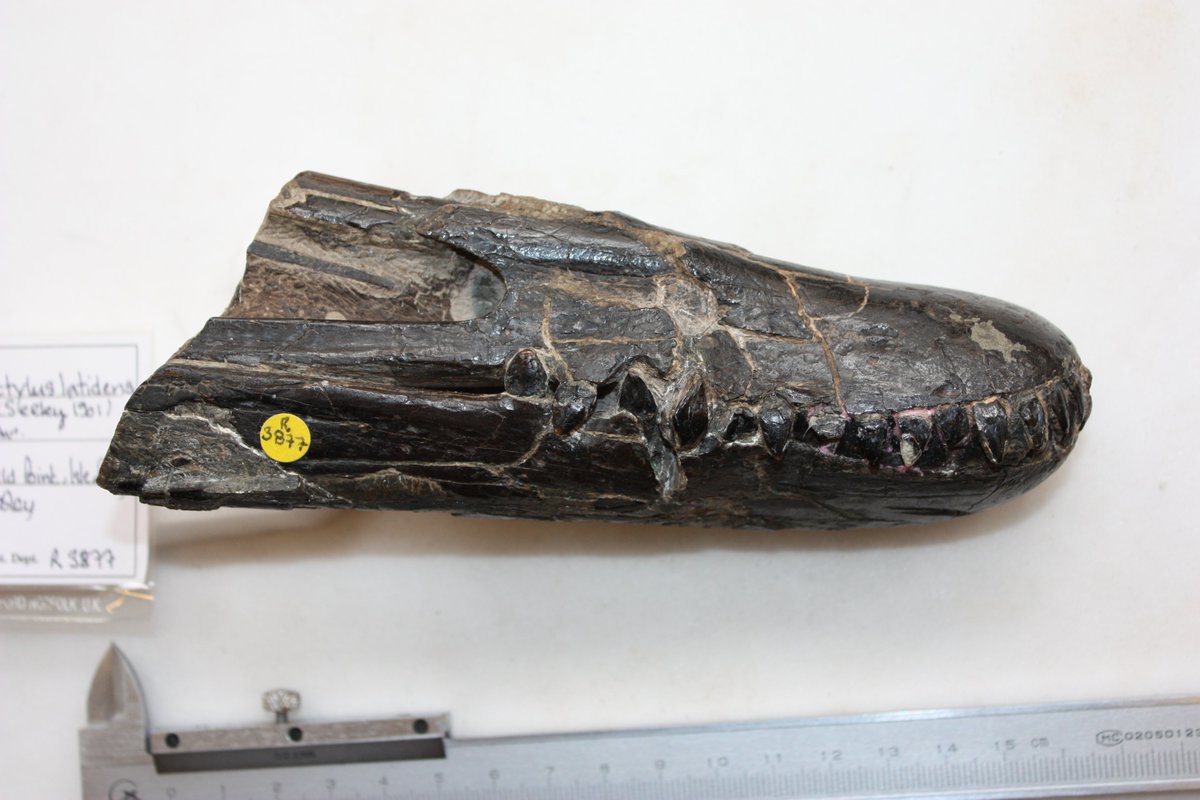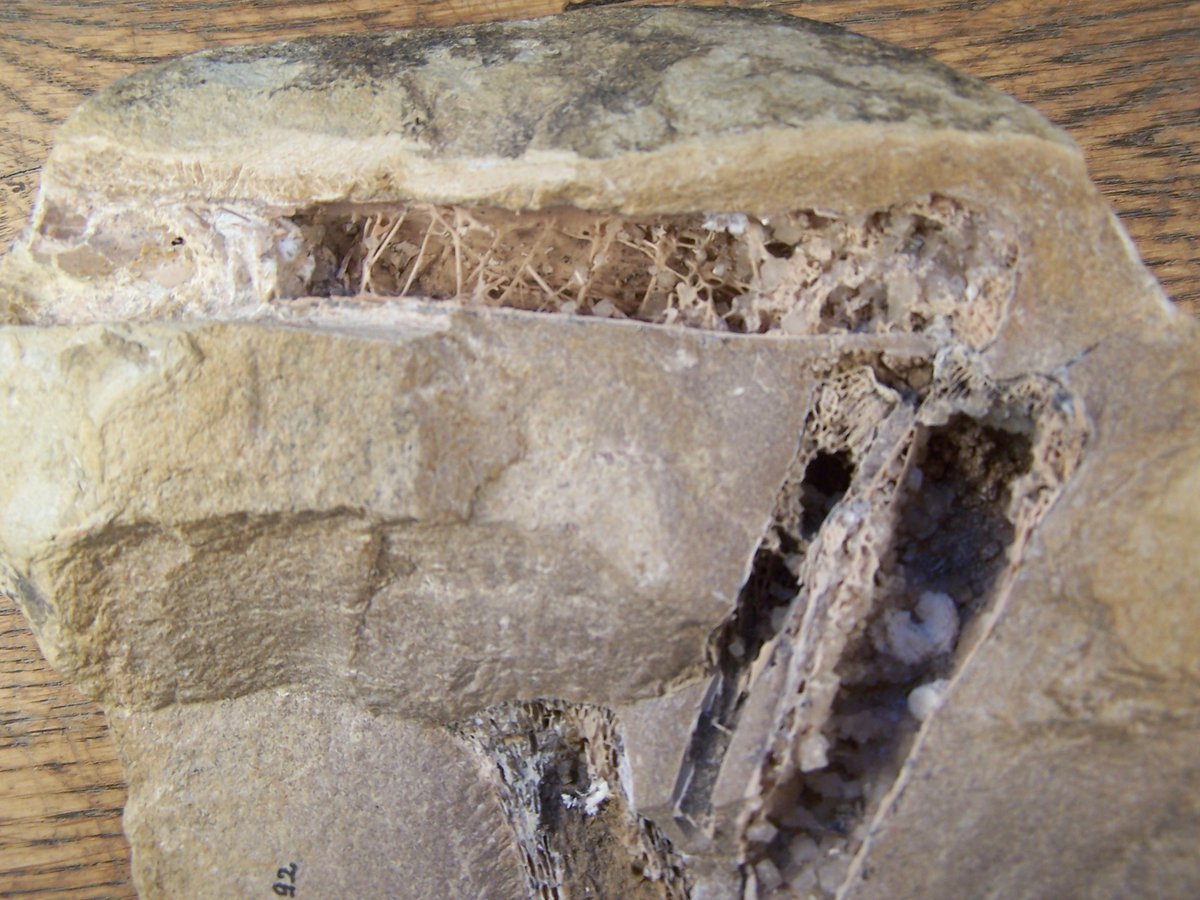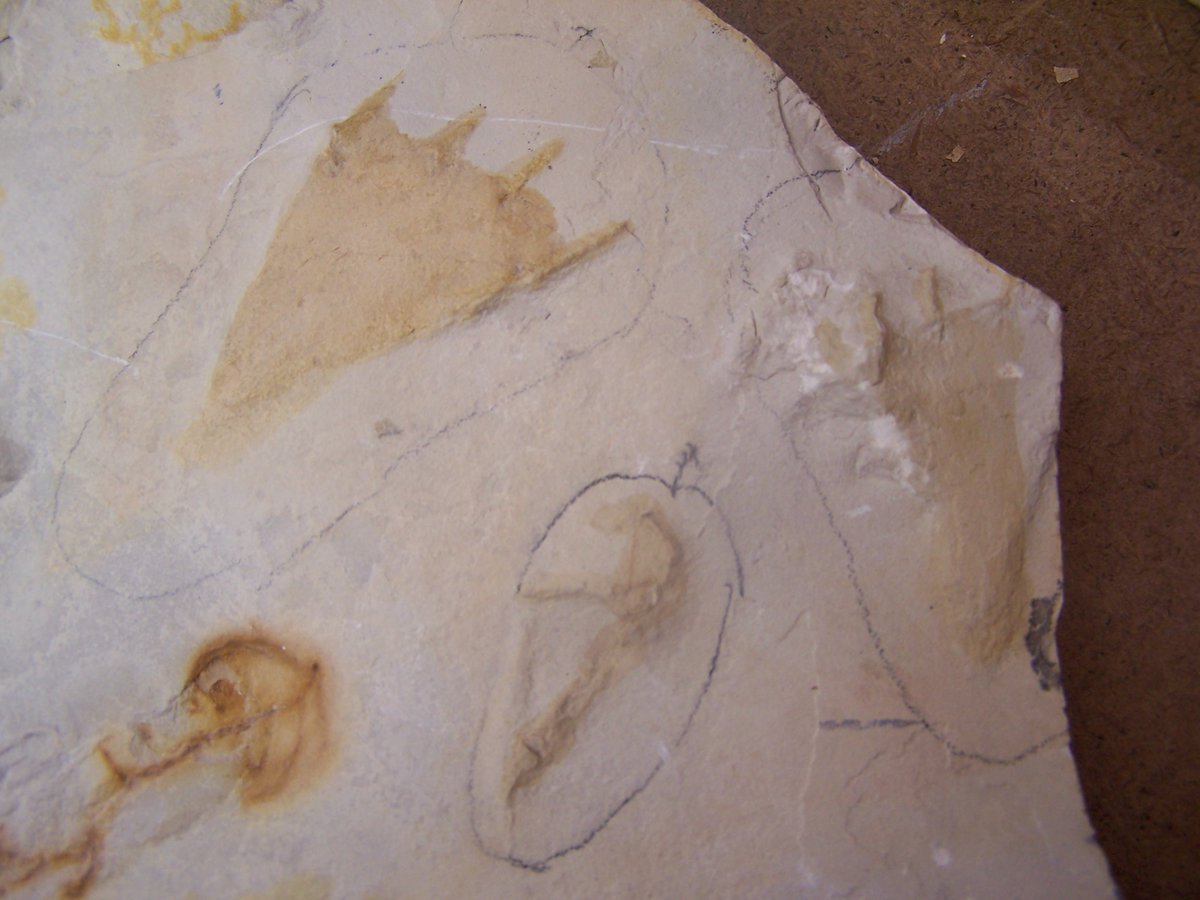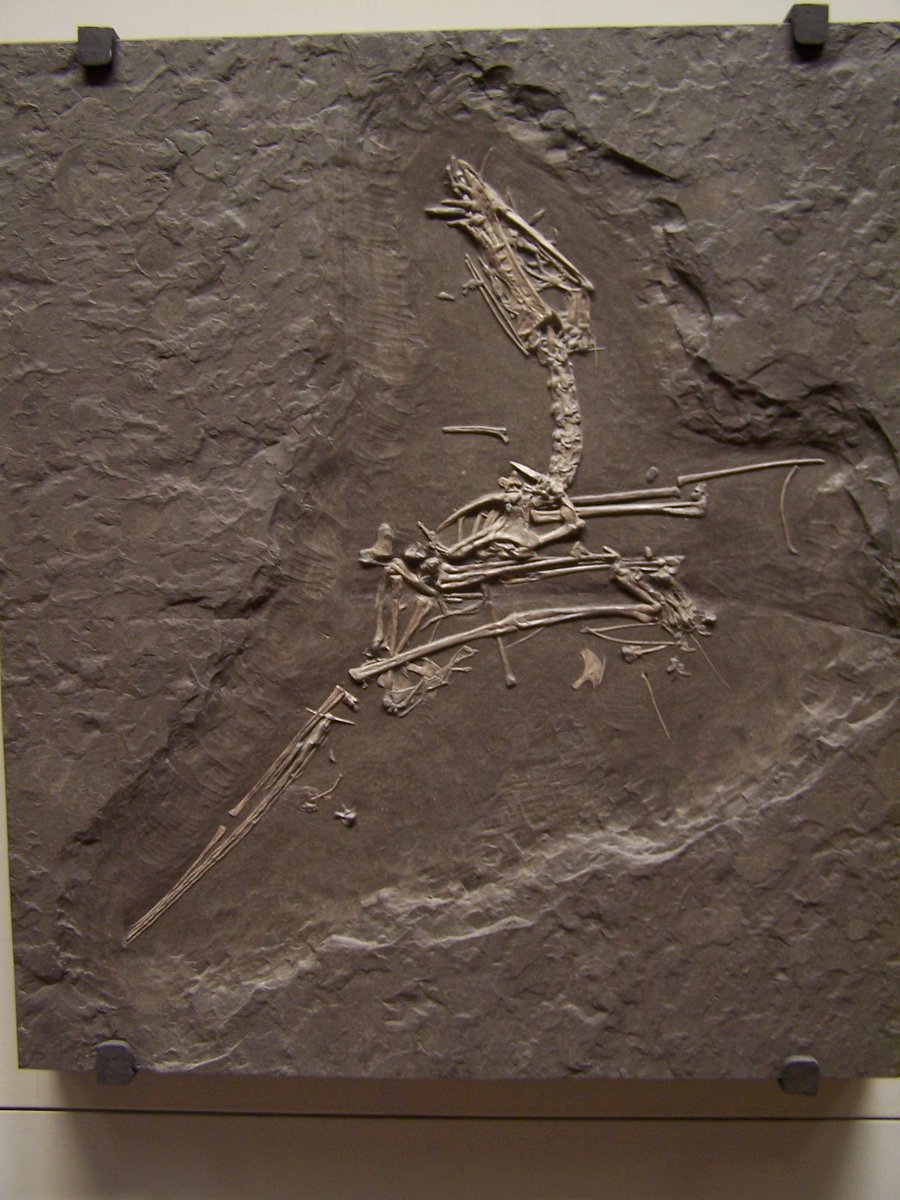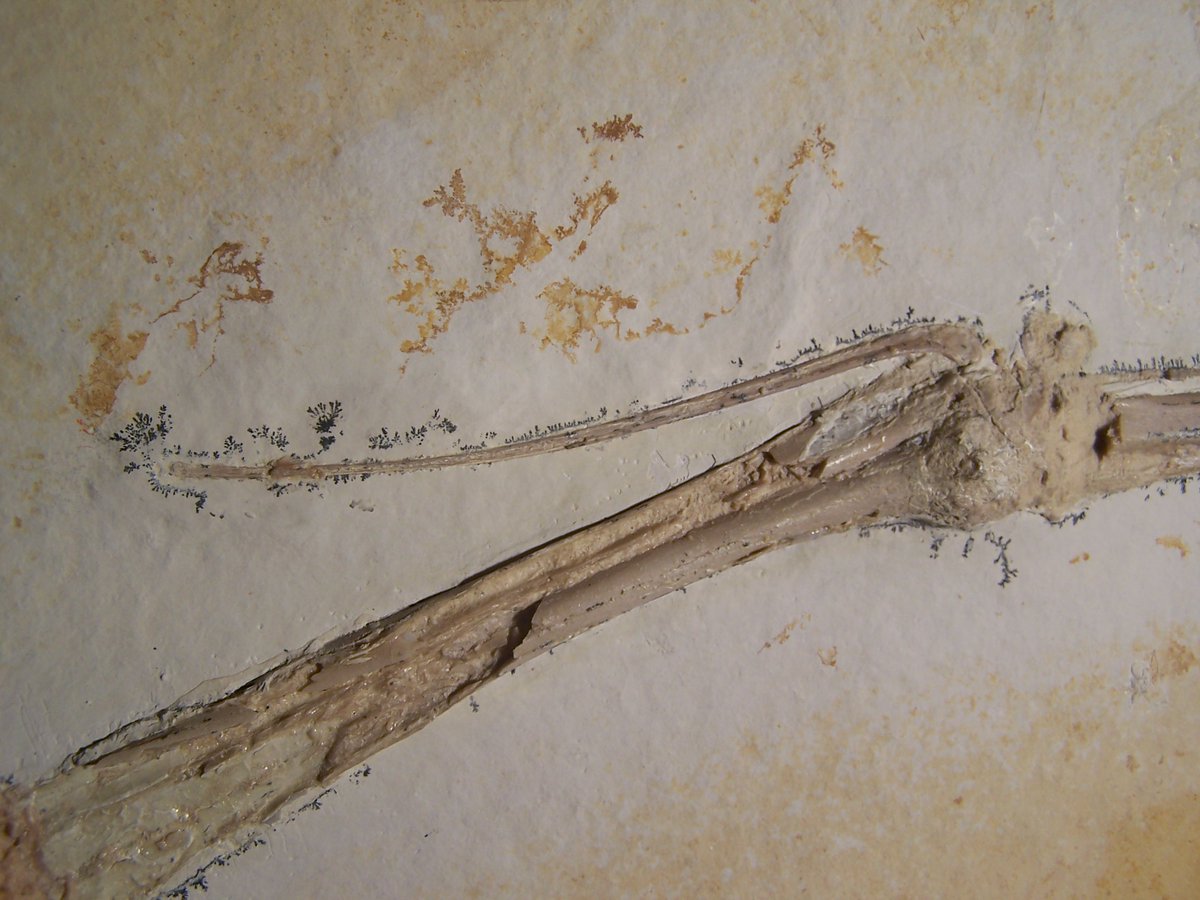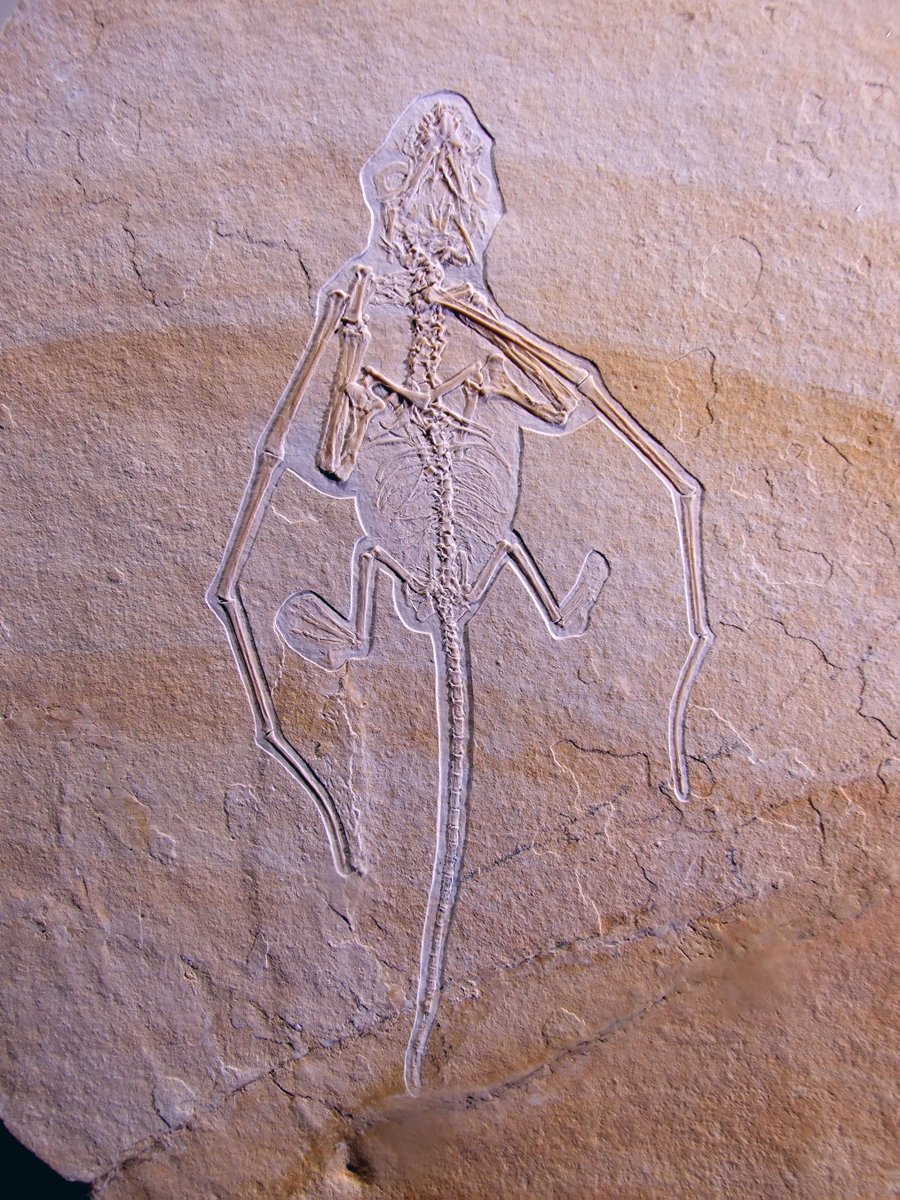I've been going through a whole bunch of photos of #pterosaurs for a project so I thought I'd pull out a bunch for a big #FossilFriday thread on these amazing flying reptiles that are absolutely not #dinosaurs.
This is the 'Zittel wing'. A Rhamphorhynchus and one of the first good specimens with soft tissue preservation that revealed something about the main wing membrane, in particular the presence of stiffening fibers called actinofibrils.
This Cretaceous specimen from Brazil is badly incomplete but it does show in particular huge claw sheathes on the toes and preserves the sole of the foot which has numerous fine scales.
This is Feilongus from China. Known only from this head, it has enormously elongate jaws with numerous small teeth and was most likely feeding on small fish.
Something less fragmentary now, a complete Sinopterus from the Early Cretaceous of China. This was one of the tapejarids and their ecology is still rather uncertain but might well have been terrestrial foragers feeding on things like fruit and seeds.
And here's a rather incomplete skull of Dimorphodon from the UK. Note the relatively big fangs at the front of the jaw and the much smaller teeth behind and even tiny ones in the lower jaw.
Pterosaurs don't have to be flat. Here's a set of jaw tips of the British Istiodactylus which is wonderfully preserved in 3D. There's quite a bit of this animal though annoyingly many bones are broken, but these rounded jaws and triangular teeth are very characteristic.
And here's a truly phenomenally complete, intact and 3D head - Anhanguera as seen from the pov of a fish that was about to be eaten a hundred or so million years ago.
Pterosaurs are rare because they have very thin and fragile bones, even compared to birds and they don't have hard shelled eggs either. So to find this egg containing a pterosaur embryo was an absolutely phenomenal find when it was published.
And here are some pterosaur bones in section. There's lots of crystals have gone in but you can see how thin the bone walls are at the edges, how empty these bones were, and the tiny supporting struts inside that gave them strength.
And it's not just bones, we do have pterosaur tracks too. The upper two triangular prints here are from the feet and the one in the middle below is a hand print showing the three free fingers. Pterosaurs were quadrupeds.
Some fossil localities are very good for pterosaurs and we have large numbers of specimens. This is a very complete, but slightly disarticulated Dorygnathus from Germany, one of many known.
This is a shot of the wrist of a large ctenochasmatid from the Jurassic of Germany. It shows off the long pteroid, an odd bone derived from the wrist that supported an extra flap of wing at the front called the propatagium.
And I'll finish off with Bellubrunnus, a pterosaur I described and named with colleagues around 10 years ago. It's immaculately preserved and with uniquely forwards pointing wingtips.
I'll leave things there. I will add quickly that these are all my original photos taken in various museums and these are all original specimens, no casts or copies here. :)
While not about pterosaurs, if you want to hear more from me on fossil reptiles, there's my #dinosaur podcast https://terriblelizards.libsyn.com with @iszi_lawrence and lots of my other talks, outreach, papers etc. is at http://davehone.co.uk

 Read on Twitter
Read on Twitter